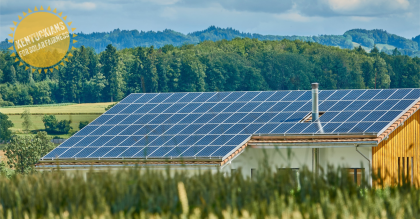
Learn the Difference
There are three principal ways solar energy is deployed in the country: universal, private solar and third party-leasing. Solar power is growing in Kentucky, but what kind is best for everyone?
Universal Solar – A large solar plant which provides the benefit of fixed-priced electricity during peak demand periods when electricity is the most expensive. They can utilize several different types of solar technologies including: concentrating solar power (CSP), photovoltaics (PV), or concentrating photovoltaics (CPV). According to the Solar Energy Industries Association, there are over 3,300 MW (megawatts) of large, universal solar plants in the U.S. and significant construction underway that could power over 4.3 million homes. Options like community solar are expanding around the country to offer customers the opportunity to buy shares of a large-scale, universal solar project if there are unable to put a system on their residence or may rent their home or apartment.

Private Solar – These are solar installations that are physically owned by customers and residents who pay for the upfront costs and installation. There are a host of incentive programs at the federal, state, and local level for many of these customers to help defray the costs and in many cases offer substantial paybacks over the system’s life. All residential customers that own private solar can receive a federal tax credit equal to 30 percent of the solar facility’s installed cost. In addition, many customers receive one or more of the following incentives:
- State income tax credits and/or deductions,
- State and/or local sales and/or property tax exemptions,
- State renewable energy payments or rebates,
- State Public Service Commission (PSC)-approved incentives provided by the utilities they regulate; and importantly
- Private solar credit programs like “net metering” where generated power is used on-site (typically from the rooftop of a house or business), and excess power is fed into the public energy grid, and purchased by the energy company from the private customer on a per-kilowatt-hour basis
Third-party leased – Where Third-parties can finance the cost of private solar energy development, based primarily two models. A private customer can sign a traditional lease and pay for the use of a solar system or the customer can sign a power purchase agreement (PPA) to pay a specific rate for the energy that is generated each month. When a customer utilizes this model they are in essence transferring their incentives to a leasing company who handle the upfront costs of installing the system. Leasing companies also generate additional financial incentives through the tax code with the ability to accelerate the depreciation of business expenses. While third-party solar leasing is available in my states, it is not an option in Kentucky.
